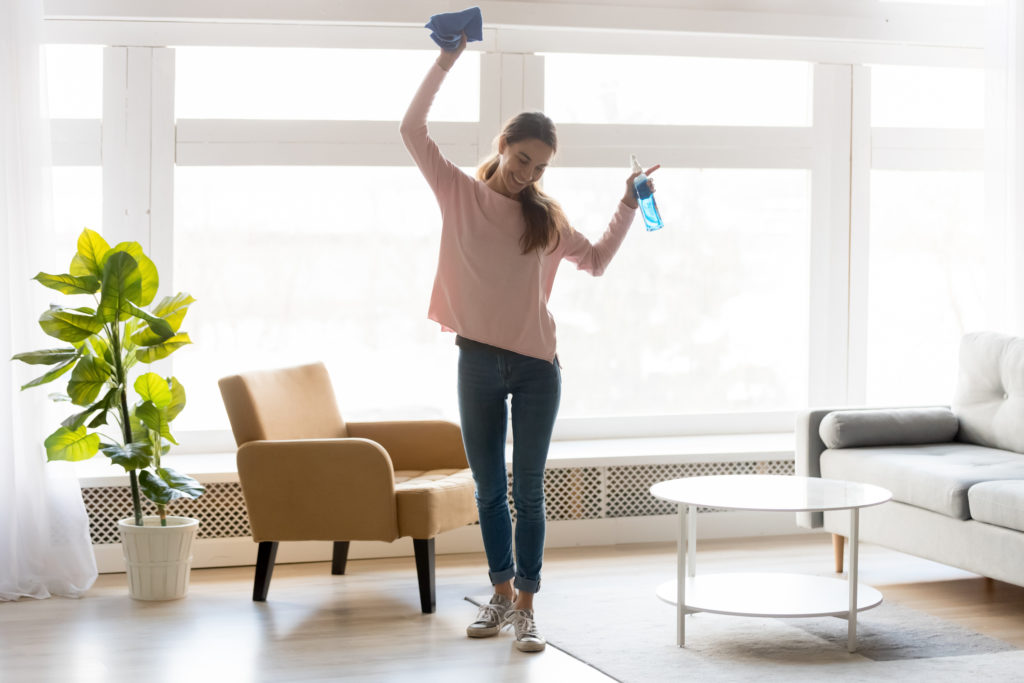There’s a sinister side to the beauty of spring. While the trees are budding and flowers are in bloom, your immune system is going crazy. Your body tries to clear the allergens from your system, causing itchy eyes and incessant sneezing, seriously spoiling the arrival of milder weather.
For many people, seasonal allergies or “hay fever,” is a sensitivity to pollen. We often think of pollen in flowers, but the pollen that comes from grass is the most widespread cause of allergic reactions. In spring, grasses release pollen that gets carried on the wind and multiplies. But before those tiny particles make it to another plant, they can get trapped in your home.
You inhale breath after breath, unaware of the pollen in the air, and your immune system responds. Allergies are really an overreaction — inhaling pollen is relatively harmless, but your body goes into overdrive. This can cause sneezing, watery eyes, congestion, itchiness, and even swelling as your system tries desperately to eliminate the intruder.
There are plenty of treatment options for seasonal allergies, but before you take any action, make sure that’s what’s ailing you rather than a cold. Check out our cold vs. allergies checklist to be sure you know what you’re dealing with.
If it is seasonal allergies, you can start getting allergy relief before the symptoms even start by deep cleaning your home.
As the flowers start to bloom, block off an afternoon to tick off our deep cleaning house checklist.
Spring Cleaning Supplies
Before you start scrubbing, consider your supplies. These can be a sneaky source of allergens and irritants, causing you to actually spread around the stuff making you sneeze.
Start with freshly washed rags or sponges so you know you’re not spreading old allergens around as you clean. If you use a duster, shake it out outside to release any pollen or dust that might’ve been trapped.
Before plugging in the vacuum, clear it out. Take the trash bin outside and dump the vacuum there so any dust released doesn’t linger in the air of your home. Consider wearing an N95 mask to prevent you from inhaling anything that comes up.
Consider the sprays you’re using as well. Some cleaning supplies contain harsh chemicals that can actually cause or worsen allergy attacks. When picking out surface cleaners and window sprays, look for non-toxic ingredients that will be healthier both for you and the environment.
You can even mix up your own with a few household ingredients. A vinegar-based all-purpose cleaner is a great place to start.
DIY Nontoxic All-Purpose Cleaner:
- 1 cup water
- 1 part distilled white vinegar (soak lemons in vinegar for a few weeks to infuse a fresh citrus scent)
- 1 teaspoon of liquid castile soap
- Optional: a few drops of essential oils for scent
Vinegar is a cleaner rather than a disinfectant, meaning it’s a perfect first line of defense to remove dirt, dust, and germs. Use it on the kitchen counter, stovetop, and in sinks and showers. If you need something to kill germs and bacteria, search for a nontoxic disinfectant as well.
Complete House Cleaning Checklist
Once you’ve gathered your supplies, start to deep clean your house from the top down. Dust and clean surfaces first and vacuum last. That way you’ll vacuum up any particles released as you clean everything else.
- Start at the top. Wipe your ceiling fans, picture frames, and bookshelves with a duster or clean rag. Don’t miss the windowsills — dust mites and pollen tend to accumulate here, especially if your windows don’t seal completely. Clean your windowsills either with a vacuum and attachment or by wiping down with a wet rag.
- Move onto your surfaces. De-clutter tables, desks, and dressers so you can dust and wipe them clean. Deep clean the bathroom, especially the corners of the shower and other areas that might accumulate mold.
- Wash your linens. If you have curtains or drapes, pull them down and throw them in the washing machine with hot water. Be sure to wash your bedding weekly (also in hot water), especially your pillowcases. While the sheets are off, clean your mattress. Sprinkle it generously with baking soda, let it sit for 30 minutes, then vacuum the baking soda using the upholstery attachment. You might want to invest in an allergen-proof mattress cover to keep it clean.
- Don’t forget about the couch. Take the cushions outside and beat them with a tennis racket to release pollen, dust, and pet dander, or vacuum well with the upholstery attachment.
- Get down to the floors. Rugs and carpets are major culprits for trapping allergens. Vacuum well — ideally once a week — to pull up dust, dander, and pollen. If you’re particularly sensitive, you might want to wear a mask as you clean to avoid inhaling anything the vacuum kicks up.
- Go even further with a steam cleaner. You can rent a steam cleaning vacuum from your local hardware store to pull up stubborn allergens in your carpets (and keep your carpets looking great). Doing this once a year can make a big difference in keeping your allergy symptoms at bay.
Now that you’ve done all the work to keep the inside of your home clean, make sure it stays that way. Replace your air filters and HVAC filters. Use a high-efficiency filter to better protect against allergens, and be sure to change it at least every 90 days.
If you know you live in an area with a lot of pollen and dust, you might even want to change it more frequently to avoid damage to your furnace.
Maintain humidity below 50% to discourage the growth of mold and dust mites with a dehumidifier. If your bathroom has a vent fan, keep it running after baths and showers to clear out the moisture.
Other Ways to Find Spring Allergy Relief
You love your pet, but dander can be a real menace if you suffer from allergies. Consider having your pet sleep outside of your bedroom (or at the very least, off your bed) to avoid inhaling dander and dust trapped in their fur.
During spring and summer, when pollen is most prevalent, bathe your pets often, especially after they’ve been running around outside.
It’s tempting to fling the windows open at the first signs of spring, but you can avoid inhaling pollen by keeping them closed.
Support your immune system by eating healthy and drinking plenty of water.
Know When to Call for Help
If you’re still suffering from allergy symptoms after deep cleaning your home and taking every possible precaution, it might be time to call in the experts. Seasonal allergies are not a life sentence. Spring allergy relief may be just around the corner!
myCallADoc offers convenient, affordable telehealth services without restrictions or insurance. You can speak with a doctor from the comfort of your home and get personalized advice about relieving allergy symptoms.
Skip the waiting rooms, wait times, and unpredictable fees. Our dedicated doctors will help you get the relief you need at your convenience.
Learn more about how to manage your allergies and get sinus pressure relief >
This article is not intended as medical advice. Always check with your doctor before embarking on a health and wellness plan.



